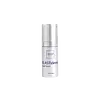What's inside
What's inside
 Key Ingredients
Key Ingredients

No key ingredients
 Benefits
Benefits

 Concerns
Concerns

No concerns
 Ingredients Side-by-side
Ingredients Side-by-side

Water
Skin ConditioningPentylene Glycol
Skin ConditioningHuman Neonatal Fibroblast Conditioned Media
Skin ConditioningGlycereth-7 Triacetate
EmollientShea Butter Ethyl Esters
EmollientGlycerin
HumectantEthoxydiglycol
HumectantLactococcus Ferment Lysate
Skin ConditioningWhey Protein
Skin ConditioningChlorella Vulgaris Extract
Skin ConditioningSaccharide Isomerate
HumectantTrifluoroacetyl Tripeptide-2
Skin ConditioningDimer Tripeptide-43
Hydrolyzed Linseed Extract
Skin ConditioningVitis Vinifera Flower Cell Extract
MaskingPyrus Malus Fruit Extract
Skin ConditioningHydroxyacetophenone
AntioxidantTocopheryl Acetate
AntioxidantPropanediol
SolventXanthan Gum
EmulsifyingPolyacrylate Crosspolymer-6
Emulsion StabilisingPolyacrylate-13
Polyisobutene
Sclerotium Gum
Emulsion StabilisingPEG-12 Dimethicone
Skin ConditioningLecithin
EmollientPullulan
Butylene Glycol
HumectantSodium Citrate
BufferingPolysorbate 20
EmulsifyingAminomethyl Propanol
BufferingDextran
Disodium EDTA
Phenoxyethanol
PreservativeEthylhexylglycerin
Skin ConditioningWater, Pentylene Glycol, Human Neonatal Fibroblast Conditioned Media, Glycereth-7 Triacetate, Shea Butter Ethyl Esters, Glycerin, Ethoxydiglycol, Lactococcus Ferment Lysate, Whey Protein, Chlorella Vulgaris Extract, Saccharide Isomerate, Trifluoroacetyl Tripeptide-2, Dimer Tripeptide-43, Hydrolyzed Linseed Extract, Vitis Vinifera Flower Cell Extract, Pyrus Malus Fruit Extract, Hydroxyacetophenone, Tocopheryl Acetate, Propanediol, Xanthan Gum, Polyacrylate Crosspolymer-6, Polyacrylate-13, Polyisobutene, Sclerotium Gum, PEG-12 Dimethicone, Lecithin, Pullulan, Butylene Glycol, Sodium Citrate, Polysorbate 20, Aminomethyl Propanol, Dextran, Disodium EDTA, Phenoxyethanol, Ethylhexylglycerin
Water
Skin ConditioningGlycerin
HumectantMethylpropanediol
SolventAlcohol Denat.
AntimicrobialDimethicone
EmollientIsocetyl Stearoyl Stearate
EmollientCoco-Caprylate/Caprate
EmollientIsononyl Isononanoate
EmollientPentylene Glycol
Skin ConditioningPhenoxyethanol
PreservativePolyacrylate Crosspolymer-6
Emulsion StabilisingCarbomer
Emulsion StabilisingMalonic Acid
BufferingSodium Hydroxide
BufferingDisodium EDTA
Amodimethicone
Zinc Carbonate
Copper Carbonate Hydroxide
AntimicrobialT-Butyl Alcohol
PerfumingParfum
MaskingWater, Glycerin, Methylpropanediol, Alcohol Denat., Dimethicone, Isocetyl Stearoyl Stearate, Coco-Caprylate/Caprate, Isononyl Isononanoate, Pentylene Glycol, Phenoxyethanol, Polyacrylate Crosspolymer-6, Carbomer, Malonic Acid, Sodium Hydroxide, Disodium EDTA, Amodimethicone, Zinc Carbonate, Copper Carbonate Hydroxide, T-Butyl Alcohol, Parfum
 Reviews
Reviews

Ingredients Explained
These ingredients are found in both products.
Ingredients higher up in an ingredient list are typically present in a larger amount.
Disodium EDTA plays a role in making products more stable by aiding other preservatives.
It is a chelating agent, meaning it neutralizes metal ions that may be found in a product.
Disodium EDTA is a salt of edetic acid and is found to be safe in cosmetic ingredients.
Learn more about Disodium EDTAGlycerin is already naturally found in your skin. It helps moisturize and protect your skin.
A study from 2016 found glycerin to be more effective as a humectant than AHAs and hyaluronic acid.
As a humectant, it helps the skin stay hydrated by pulling moisture to your skin. The low molecular weight of glycerin allows it to pull moisture into the deeper layers of your skin.
Hydrated skin improves your skin barrier; Your skin barrier helps protect against irritants and bacteria.
Glycerin has also been found to have antimicrobial and antiviral properties. Due to these properties, glycerin is often used in wound and burn treatments.
In cosmetics, glycerin is usually derived from plants such as soybean or palm. However, it can also be sourced from animals, such as tallow or animal fat.
This ingredient is organic, colorless, odorless, and non-toxic.
Glycerin is the name for this ingredient in American English. British English uses Glycerol/Glycerine.
Learn more about GlycerinPentylene glycol is typically used within a product to thicken it. It also adds a smooth, soft, and moisturizing feel to the product. It is naturally found in plants such as sugar beets.
The hydrophilic trait of Pentylene Glycol makes it a humectant. As a humectant, Pentylene Glycol helps draw moisture from the air to your skin. This can help keep your skin hydrated.
This property also makes Pentylene Glycol a great texture enhancer. It can also help thicken or stabilize a product.
Pentylene Glycol also acts as a mild preservative and helps to keep a product microbe-free.
Some people may experience mild eye and skin irritation from Pentylene Glycol. We always recommend speaking with a professional about using this ingredient in your routine.
Pentylene Glycol has a low molecular weight and is part of the 1,2-glycol family.
Learn more about Pentylene GlycolPhenoxyethanol is a preservative that has germicide, antimicrobial, and aromatic properties. Studies show that phenoxyethanol can prevent microbial growth. By itself, it has a scent that is similar to that of a rose.
It's often used in formulations along with Caprylyl Glycol to preserve the shelf life of products.
Polyacrylate Crosspolymer-6 is a texture enhancer and pH adjuster.
It is be used to thicken water-based products and create a gel-texture with a velvet feel.
One manufacturer claims this ingredient to have a pH range of 2-8 and to be biodegradable.
Learn more about Polyacrylate Crosspolymer-6Water. It's the most common cosmetic ingredient of all. You'll usually see it at the top of ingredient lists, meaning that it makes up the largest part of the product.
So why is it so popular? Water most often acts as a solvent - this means that it helps dissolve other ingredients into the formulation.
You'll also recognize water as that liquid we all need to stay alive. If you see this, drink a glass of water. Stay hydrated!
Learn more about Water